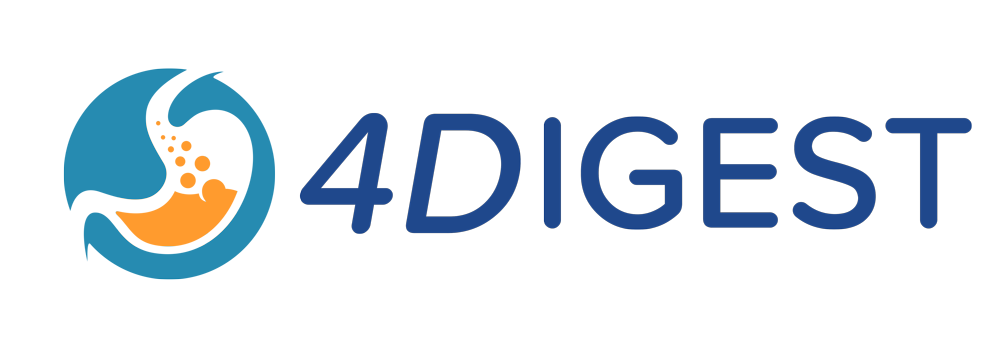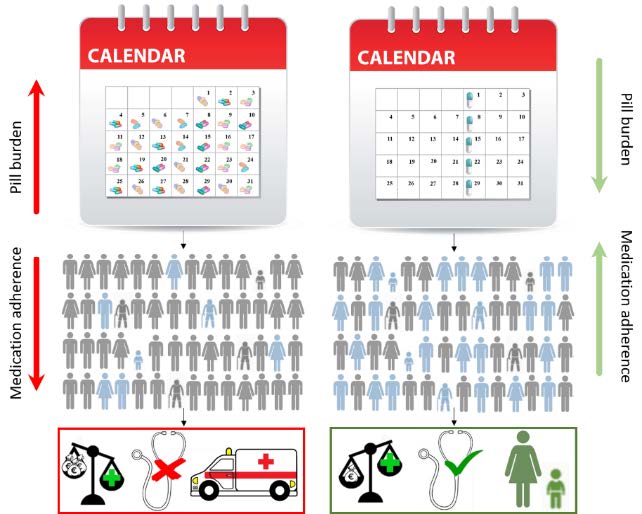Polypharmacy and chronic diseases

01 / Healthcare Costs
Medication non-adherence in the United States results in 125,000 deaths per year and $100 billion medical costs annually.
02 / Medication Errors
Approximately 50% of patients suffering from chronic conditions do not take their long-term medication as prescribed.
03 / Treatment Failure
Poor adherence to treatment compromises the effectiveness of medication and
has been associated with increased risk of adverse effects, high rates of morbidity
and mortality.
Μultiple pills/week
Medication non-adherence is a medical challenge primarily related to the high pill burden and the complex dosing schedule of life-long therapy (HIV, Tuberculosis, Cardiovascular diseases, Mental disorders), as well as socio- economic and socio-demographic characteristics.
One pill/week
Fixed dose combinations (FDCs) of up to 4 active ingredients in one tablet or capsule have shown potential benefits. However, FDCs lack the ability to simplify frequent dosing schedules and address personalized dosing.
Biomimicry: Nature inspires drug delivery applications

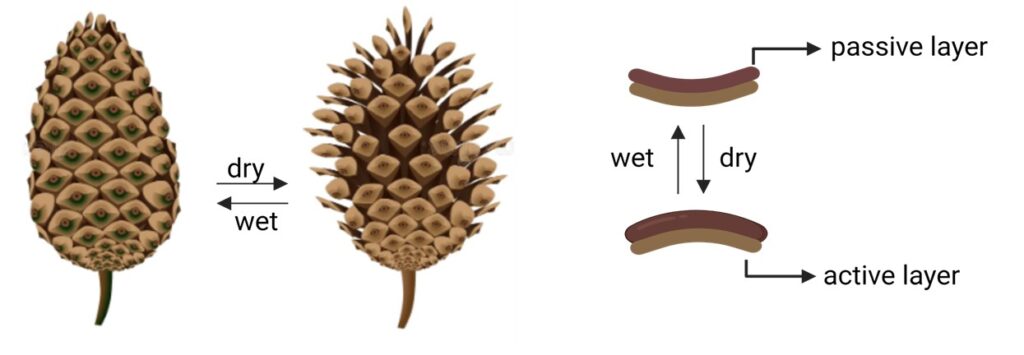
Pine cone is a natural, passive hydraulic actuator undergoing hydroscopic deformation of its multi-layered scales in order to optimize seed dispersal. Upon hydration, the outer active layer swells more, compared to the inner passive and stiffer layer, and this differential swelling strain generates bending force that results to cone closure
A nature-inspired 4D printed polypill to address the high pill burden and improve medication adherence and drug personalization in patients with chronic diseases.
Biomimicry: Nature inspires drug delivery applications
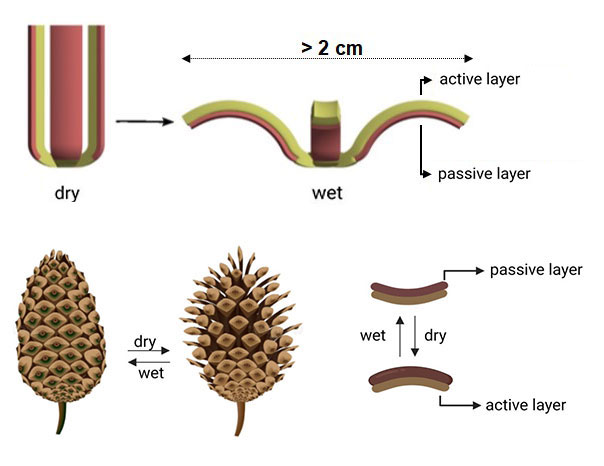
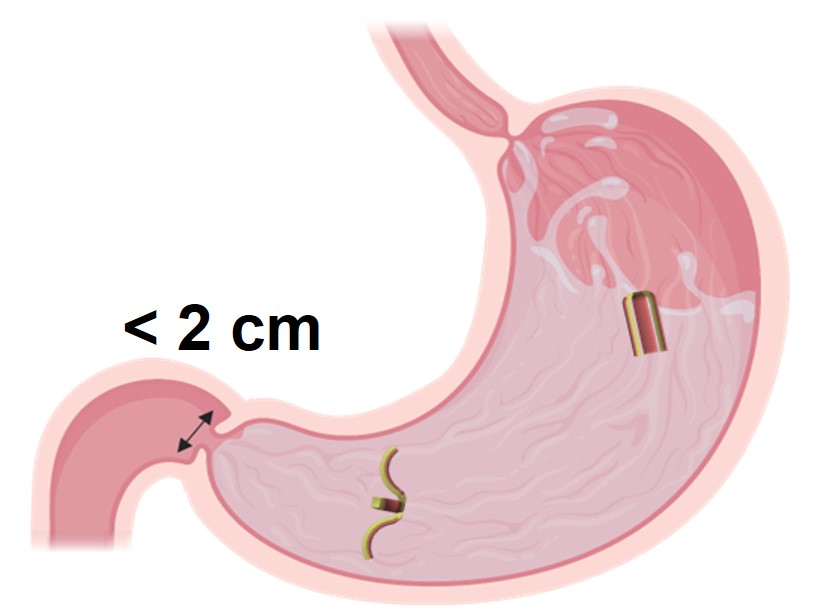 Inspired by the hygroscopic deformation observed in multilayered pine cone scales, wherein hydration of the outer active layer induces cone closure, we strategically altered the orientation of the bilayered structure in a four-arm prototype of ingestible size (where each arm resembles the scales of a pine cone) to achieve deployment rather than closure upon hydration. By inversing the orientation of the swellable active layer at the polypill arms, a differential swelling strain develops between the active and passive arm layers generating bending force that enables the polypill to deploy and constrain passage through the pylorus. The bilayer-arm polypill self- deploys upon ingestion to enable prolonged gastric retention and sustained drug release.
Inspired by the hygroscopic deformation observed in multilayered pine cone scales, wherein hydration of the outer active layer induces cone closure, we strategically altered the orientation of the bilayered structure in a four-arm prototype of ingestible size (where each arm resembles the scales of a pine cone) to achieve deployment rather than closure upon hydration. By inversing the orientation of the swellable active layer at the polypill arms, a differential swelling strain develops between the active and passive arm layers generating bending force that enables the polypill to deploy and constrain passage through the pylorus. The bilayer-arm polypill self- deploys upon ingestion to enable prolonged gastric retention and sustained drug release. Bioinspired gastric-deployable, sustained drug release 4D printed polypill:
Printed in ingestible dimensions
One-step manufacturing process
Drug dose personalization
Self-deployment upon contact with simulated gastric fluids within the timeframe of gastric emptying
Sustained release of a three-drug combination for up to 6 days
Platform technology for chronic diseases
Publication
Our research has been published in Advanced Intelligent Systems!
Read more about it here: http://doi.org/10.1002/
